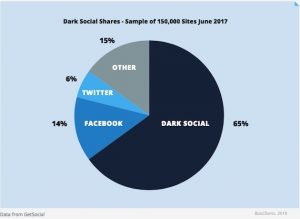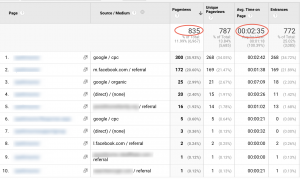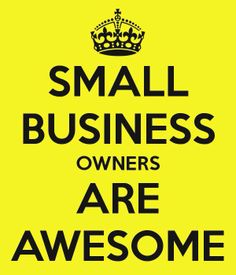Nobody likes to be bamboozled with jargon do they? Working in an office that lives and breathes eCommerce on a daily basis, however, it’s sometimes easy to forget that not everyone knows their AOV from their PCI.
Of course there are times when more technical terms are unavoidable – there just isn’t another word for SSL certificate. But that doesn’t mean we can’t help explain what exactly this is or what it means. And so our eCommerce jargon buster is born.
Affiliate Marketing Definition
A popular online strategy to increase your market share by allowing your product or service to be advertised for sale on 3rd party websites. This will involve a commission arrangement with the 3rd party, to be paid whenever they generate a sale for your website.
Anonymous checkout
A checkout process where a user completes the transaction without creating an account on the seller’s website.
Average order value (AOV)
The average amount spent per customer order. Often used as a performance metric.
E.g. “As a business owner, looking at the average order value is a great metric to gauge annual revenue growth.”
B2B
Business to Business: A type of business transaction between two business entities that are not the final consumers of the goods or services.
B2C
Business to Consumer: Business transactions between a business entity and a consumer.
Category
In eCommerce, products are often grouped into a hierarchy of categories and subcategories. E.g. “Our bespoke furniture eCommerce store is organised using categories like bedroom, living room and home office. Subcategories include type of wood finish.”
Checkout process
The process of gathering the payment information, address and order verification that is necessary to complete the purchase of items in the shopping cart. In the final step, the customer reviews and places the order.
E.g. “Best practices in eCommerce require having a user-friendly and smooth checkout process.”
Conversion
A tracked, successful action that website visitors complete. For example, this could be when a website visitor completes the checkout process or downloads
Conversion rate
The ratio of conversions to visits, often used to measure digital performance. For example, if you have received 200 clicks and 5 conversions, your conversion rate is 2.5%.
E.g. “I improved my conversion rate by including the words ‘free consultation’ – a lot more people sign up now.”
Coupon code/ discount code
A special code a customer may enter during checkout to apply a discount.
Drop-ship
A method of fulfilling orders where a retailer has items shipped directly from the manufacturer or supplier to the customer.
eCommerce
The commercial trade of products and services over the internet.
eCommerce platform
A software program or application that lets businesses sell online. Features of eCommerce platforms vary but they generally include product information, customer account management, shopping cart and checkout processes, product search capabilities and order management.
Fulfilment
The process of completing and delivering purchased products or services to the customer.
E.g. “Every online seller has to consider the most cost-effective method for fulfilment.”
Inventory
A complete list of a seller’s current stock.
Merchandising
The placement and display of products to entice a customer to make a purchase. Examples include ‘featured item’ lists, specific product promotions, and recommendations of top sellers or related products.
Merchant account
An account a retailer holds with an institution such as a bank or payment gateway provider. The account is defined by a contractual agreement that allows the seller to accept credit cards or other common types of payment on an eCommerce website.
Order confirmation
The final step of the checkout process, where a customer is informed that their order has been placed successfully. This message is usually delivered on screen and by email.
Packing slip
A document that is usually included in a shipped package that describes the contents. Packing slips do not include financial or account information.
Path to purchase
The path a prospect follows that leads to a sale.
Payment gateway
A service provider that authorises online payments.
E.g. “Payment gateways allow customers to make purchases with bank or credit cards with the simple push of a button.”
PCI Compliance
The Payment Card Industry Data Security Standard: This is a set of requirements every company that processes, stores or transmits credit card information must meet (i.e. every online merchant).
Privacy policy
A statement that explains what customer information an online retailer will collect and how the retailer might use that information,
E.g. “Our company’s privacy policy reassures customers that we only collect minimal information and we never sell email addresses to third parties.”
Product feed
A file that contains a list of product inventory and product details. This file can be made available to other services in order to promote the products contained in the feed. E.g. “We uploaded our company’s product feed into a search engine’s merchant database so our products would show up when they match a search.”
Product recommendation engine
Software that suggests specific products to customers on a website, based on available information. E.g. “The product recommendation engine on our bespoke furniture site suggests matching chairs for every table and desk.”
Registration
The process of creating a customer account with an online retailer. The account holds personal information such as name, billing and shipping address, and payment details.
Return policy
A statement that explains when, how and under what conditions a customer may return products purchased from the retailer. E.g. “Our return policy, linked at the bottom of our website, explains that bespoke furniture cannot be refunded unless faulty.”
SSL certificate
An SSL certificate is a file that is installed on a web server to encrypt sensitive information that is being transmitted – for example credit card details entered on a website. It also assures customers that a site is using a trusted and secure connection. Retailers can purchase an SSL certificate through a certificate authority.
Shipping
The sending of purchased products to a consumer. Shipping may also refer to the additional fees charged by the retailer to cover the cost of delivery. E.g. “During the checkout process, shipping is calculated based on the total weight of the furniture being purchased.”
Shopping cart
The functionality of an online store that lets visitors add multiple products to a single order. E.g. “Having a shopping cart on your site is essential to allow users to browse and buy multiple items.”
Stock keeping unit (SKU)
A unique identifier given to individual products to track inventory and differentiate between items for sale. E.g. “Using SKUs has helped our business keep track of what stock we have in what location, so we can optimize inventory management.”
Tax
In eCommerce, this refers to the total taxes that must be collected per local laws and policies as part of an online order.
Transactional email
An automated email message that is sent in response to a specific event or transaction.
Are there any others you think we should add to the list? Let us know in the comments below.
This article was originally published on iweb.co.uk/blog
Digital & Social Articles on Business 2 Community(88)
Report Post






